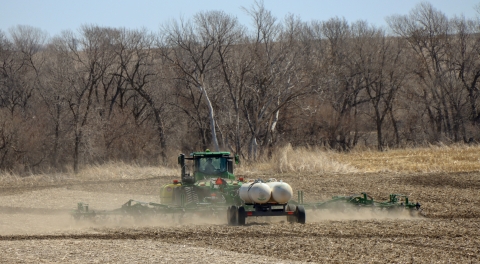With the completion of harvest rapidly approaching, agricultural producers may be tempted to take advantage of mild, dry conditions to apply anhydrous ammonia to their fields. But producers should keep in mind that unless fall application of nitrogen takes place under optimal conditions, the practice can result in nitrogen being lost, and their hard-earned money gone along with it.
According to the University of Nebraska, applying fertilizer in the fall is the riskiest of nitrogen management practices due to relatively high loss potential. The University recommends that producers wait to apply nitrogen until soil temperatures at four inches of depth drop below 50°F since the conversion of anhydrous to nitrate (nitrification) is much slower at temperatures below 50°F.
When nitrification occurs, the ability of nitrogen molecules to cling to soil particles decreases, increasing the possibility that expensive fertilizer will leach beyond the root zone. Fall application leaves nitrogen in and on the ground for six months or longer with no plants available to use it.
Soil temperatures need to be at 50° or lower for several days to slow loss due to conversion of anhydrous to nitrate. The November 1st anhydrous application date that many producers have used in the past is rarely valid since soil temps often remain above the 50° threshold until late into the month. Current Nebraska soil temperatures can be found here.
